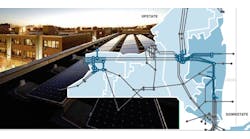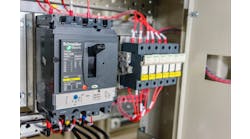Virtual Power Plants (VPP) took another big step forward today with the launch of Renew Home, a new entity that says it’s the largest residential VPP in North America.
VPPs use an intelligent control system and bidirectional technology to aggregate energy from networked resources located at multiple sites, such as rooftop solar systems, batteries, electric vehicles (EVs) and other distributed energy resources (DERs).
The technology creates what is intended to be a flexible power network by bundling together what could be hundreds of discrete power sources into one that can be dispatched during times of peak demand, just like a traditional centralized power plant.
The VPP will include millions of homes
First announced in December 2023, Renew Home was created as a result of the merger of Google Nest’s Renew and OhmConnect, along with a $100 million investment from majority owner Sidewalk Infrastructure Partners (SIP).
Renew Home plans to manage energy use in millions of homes across the country by controlling more than a dozen different types of connected devices, including smart thermostats, heating and cooling systems and water heaters.
The aggregated energy will be harnessed to support the demand response and VPP programs of more than 100 utilities, supporting the grid and saving homeowners on their energy bills, according to a statement from the company.
“The marriage of Nest’s innovative approach to managing energy use in the home with OhmConnect’s customer-focused grid services platform will be transformational,” said Renew Home CEO Ben Brown. “With our industry-leading partners, Renew Home will be able to coordinate the home energy use of millions of customers to help catapult us into a 100% clean energy future.”
VPP participants stabilize the grid and reduce their energy costs
VPP participants are typically compensated in the form of incentive payments, which could be between $500 and $1,000 per year, according to a recent report from the Brattle Group. The report also found that by 2035 VPPs will have the potential to save California consumers more than $550 million each year.
For their part, utilities can use VPPs to avoid the costs associated with the construction of new infrastructure projects.
A recent report from the U.S. Department of Energy (DOE) said that coincident peak demand on the grid will increase approximately 60 GW between 2023 and 2030. The DOE concluded that 10-20% of that growth could be addressed by tripling the current capacity of VPPs.
Doing so, the DOE estimated, could save utilities nearly $10 billion in annual grid costs.
Renew Home already has 3 GW of electrical energy under its control and is planning to expand to 50-GW by 2030.
Working with Google Home APIs, the Renew Home platform integrates with Google Nest and Amazon Alexa products, as well as dozens of connected devices and appliances offered by LG, Honeywell, Rheem, SunPower and Sense, among others.
“This is a pivotal moment for virtual power plants,” said Alan Machuga, CTO of Rheem, a manufacturer of HVAC and water heating products. “We are excited to partner with Renew Home to help customers save money and energy – while supporting the grid.”








